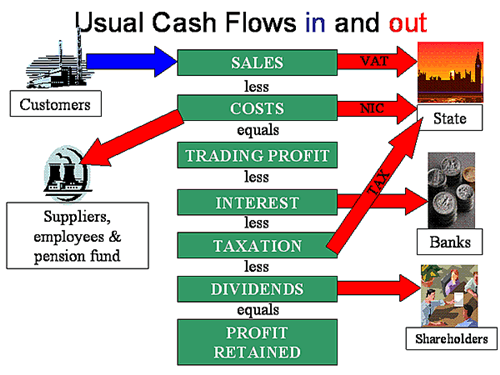Managed Accounting Services
Prepare cash flow forecast

A cash flow forecast aims to predict a company’s future financial liquidity over a particular period of time, using tried and tested financial models. While cash usually refers to the liquid assets in a company’s bank account, the forecast typically estimates its treasury position, which is cash plus short-term investments minus short-term debt. The cash flow itself refers to the change in the cash or treasury position from one period to the next. The cash flow forecast is a significant way to value assets, work out budgets, and determine suitable capital structures. It will provide a good indicator of a company’s financial health for potential investors.
Numerous approaches are generally used to forecast cash flow—one direct, and three indirect. The direct method is most suitable for short-term forecasts of anywhere from 30 days up to a year, subsequently it is based on actual data from which the projections are induced. The data used are the company’s cash receipts and disbursements (R&D). Receipts primarily include accounts from recent sales, sales of other assets, proceeds of financing, etc. Disbursements include salaries, payments for recent purchases, dividends, and debt servicing. Many of the R&D entries are based on projected future sales.
The other procedures all use a company’s projected income statements and balance sheets as their basis. The first method is adjusted net income (ANI), which first examines the operating income (EBIT or EBITDA), then looks at changes on the balance sheet such as receivables, payables, and inventory to forecast cash flow. The pro forma balance sheet (PBS) method looks at the projected book cash account—if the projections for all other balance sheet account are accurate, then the cash flow will also remain correct. Both these methods can be used to make short-term (up to 12 months) and long-term (multiple year) forecasts. Subsequently they use the monthly or quarterly intervals of a company’s financial plan, they must be adjusted to account for the differences between the book cash and the actual bank balance, and these might be suggestively different.
The third method uses the accrual reversal method (ARM), which reverses large accruals (revenues and expenses that are recognized when they are earned or incurred, disregarding the actual receipt or dispersal of cash) and calculates the cash effects based on statistical distributions and algorithms. This allows the forecasting period to be weekly or even daily. It can also be used to extend the R&D method beyond the 30-day horizon because it eradicates the inherent cumulative mistakes. This is the most complicated of all methods and is best suited for medium-term forecasts.
Advantages
- Cash flow projections provide a useful indicator of a company’s financial health.
- Cash flow forecasts allow you to predict the peaks and troughs in your cash balance, helping you to plan borrowings, and they tell you how much surplus cash you may have at a given time. Most banks insist on forecasts before considering a loan.
Disadvantages
- A cash flow forecast never tells the whole story about a company’s financial situation and must not be relied on as the sole indicator.
Action Checklist
Be realistic when inputting your approximations. An acceptable method is to combine sales revenues for the same period 12 months earlier with predicted growth.
Choose suitable accounting software to assistance you prepare a cash flow forecast. Check that it will allow you to update your projections if there is any change in market trends or your company’s fortunes. Good software shortens planning for seasonal peaks and troughs and can also calculate for “what if” situations.
Dos and Don’ts
What you have to do
Use the most suitable method, depending on how long you want your forecasting horizon to be.
Remember that a cash flow forecast can only regulate the short-term sustainability of a company. The longer the forecast horizon, the higher the chance of an inaccurate projection.
Bear in mind that the forecast is dynamic—you will require to adjust it often depending on business activity, payment patterns, and supplier demands.
What you should not do
Don’t rely solely on a cash flow forecast to determine a company’s financial stability—look at the other financial statements and forecasts, such as an income statement and a balance sheet, to see what’s actually going on.
Don’t forget to incorporate warning signals into your cash flow forecast. For instance, if predicted cash levels come close to your overdraft limits, this should sound an alarm and trigger action to bring cash back to an acceptable level.
Disclaimer: The software content used in this page is only for customers to know about the software and not for any commercial intentions.
The main benefits of working with accountingoutsource2india are below:
Consistent Data Source – accountingoutsource2india business give you consist and precise data which can be easily used for the benefits of the decision-making desires. This in turn guarantees competence in workflow and there is no expenditure of time.
Maximize your ROI: accountingoutsource2india work give significant cost reduction and gives you high Return of asset.
High Superiority Work - Main benefits of accountingoutsource2india work is to get high quality work as per your needs.
Well-organized Data Management: accountingoutsource2india provider companies take input data from any source and give output data into digital format or as you need set-up so this provide better organization of data.
Securities, Uniformity, Rapid growth, Speed, services and improve customer satisfaction, improved presentation, Backend effective work environment these are main goal of accountingoutsource2india.
We work 24/7 days for more details feel free to contact us at any time you required.




